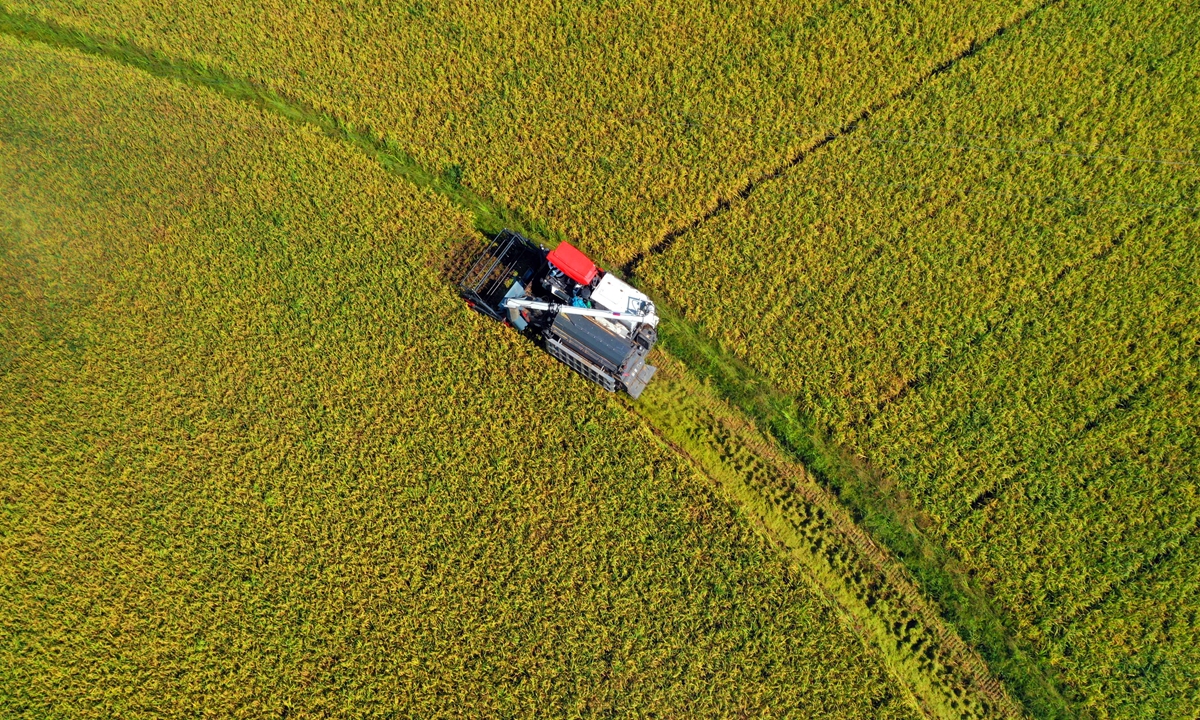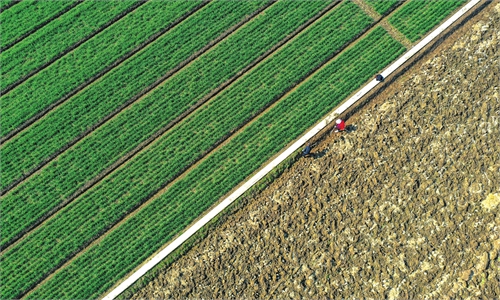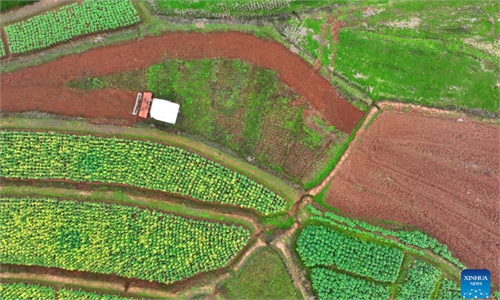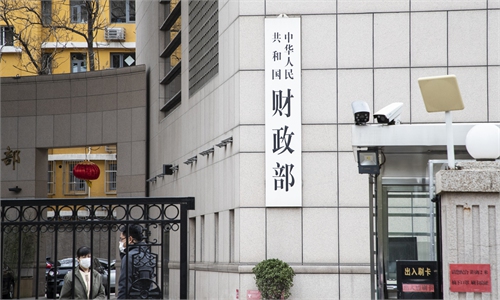
Farmers harvest early rice in Yongfeng, East China's Jiangxi Province on Tuesday. In the heat of the summer rush, farmers are busy harvesting 420,000 mu (28,000 hectares) of mature early rice to ensure that these summer grains are put into silos. China has set a grain harvest goal of 650 million metric tons and has achieved the target for six years in a row. Photo: VCG
The 2023 Government Work Report once again stressed "securing the food supply of more than 1.4 billion people" and said that stabilizing grain production remains one of the top priorities in 2023, as the Chinese leadership has stressed that building up strength in agriculture is the foundation of a great modern socialist country.
Deputies and members of the ongoing two sessions from the food sector said on Thursday that scientific and technological support is essential to guaranteeing food security in China, vowing to take concrete moves to ensure stable and secure supply of grains and major farm produce.
We ensured that both Party committees and governments assumed responsibility for ensuring food security and ensured stable production and supply of grain and other major agricultural products. With these efforts, we have fully secured the food supply of more than 1.4 billion people, according to the Government Work Report submitted by Premier Li Keqiang on Sunday to the national legislature for deliberation.
We should keep total grain acreage at a stable level, promote the production of oilseed crops, and launch a new drive to increase grain production capacity by 50 million metric tons, Premier Li said.
The report focuses on ensuring national food security, which reflects China's persistent determination to secure the food supply for its people, said Pan Yuansong, a member of the National Committee of the Chinese People's Political Consultative Conference (CPPCC) and deputy mayor of Panjin City, Northeast China's Liaoning Province.
"As a member from the agricultural community, I am encouraged and confident," Pan was quoted by media as saying.
The Government Work Report has proposed to maintain grain output of over 650 million metric tons, the third time the target has been mentioned in the Government Work Report.
China has recorded eight consecutive years registering grain harvest of over 650 million tons. Official data showed that China's grain output totaled about 686.53 million tons in 2022, up 0.5 percent or 3.68 million tons over 2021
"The grain output target mentioned in this year's Government Work Report will definitely be reached given the efforts from the central down to local levels," Wang Gangyi, a professor at Northeast Agricultural University, told the Global Times on Thursday.
According to Wang, in recent years China has made huge efforts to ensure food security. As a result, the total capacity of its agricultural machinery, the sown area of main grain crops, the application amount of pesticides and fertilizers, and the rural electricity consumption showed an increasing trend year by year.
"Ensuring food security now refers to the capacity to produce, store, transport and process food when needed, rather than the simple pursuit of grain output in the past," said Wang, noting that food security is now measured by the capacity of the whole agricultural industrial and supply chain, from production to dining table.
Chinese experts also said ensuring China's grain security is also the biggest contribution to the global grain security.
The Central Rural Work Conference in 2022 and the "No. 1 central document" in 2023 both proposed to "formulate implementation plans for a new round of actions to increase China's grain production capacity by 50 million tons," and experts said it means that China has begun to move toward a new level of output of 700 million tons.
Farmers across China are ramping up for spring plowing with the preparation of fertilizers and other materials in place, while trying to expand planting area in order to shore up the country's food security.
The latest data from the Ministry of Agriculture and Rural Affairs showed that 18.8 percent of country's early rice seedlings have been raised, and the progress is 1.2 percentage points faster than in the same period last year.
Technological innovation
Analysts and members stressed that scientific and technological support is essential to guarantee food security in China, and Government Work Report said that China will also invigorate the seed industry and support the development of agricultural science, technology, and equipment.
But China faces challenges that need to be solved. For example, the per mu production capacity of main grains in major producing areas should be or has already been raised to the limit, according to experts.
"The fundamental way out to ensure food security is scientific and technological innovation," Wu De, a member of the National Committee of CPPCC, said in a proposal shared with the Global Times on Thursday. He is also the head of Sichuan Agriculture University.
The production efficiency needs to be improved urgently, and how to carry out technology breakthrough is crucial to ensure a stable supply of important agricultural products, Wu added.
Speaking on how to increase China's agricultural capacity, Wang Gangyi from Northeast Agricultural University said that the country should construct and improve water conservancy projects to improve irrigation conditions, transform low- and medium-yield farmlands to high-yield and build standard farmlands, improve the level of agricultural mechanization, improve science and technology support, and select and promote good varieties.
Northeast China's Jilin Province, which is one of the major grain producers in China, has set a good example in the popularization of agricultural machinery and improvement of agricultural techniques in production.
The province's comprehensive mechanization level of crop cultivation and harvest reached 93 percent in 2022, effectively improving the efficiency of grain production. Jilin's total grain output in 2022 was 40.8 million tons, an increase of 416,000 tons year-on-year. The province's grain yield per mu is 0.47 tons, 21.58 percent higher than the national average level, ranking first among the major grain-producing provinces in China.
Agricultural infrastructure, water conservancy and breeding can all be improved by digital means, Wang Peng, a research fellow at the Beijing Academy of Social Sciences, told the Global Times on Thursday.
"From the harvest of agricultural products to processing, and then to the market, the whole process can be improved through digital platforms, which can better realize the linkage between supply and demand, therefore reduce cost and increase efficiency. In fact, e-commerce platforms, digital technologies and unmanned agriculture have already played important roles in China's agricultural industry," said the research fellow.





